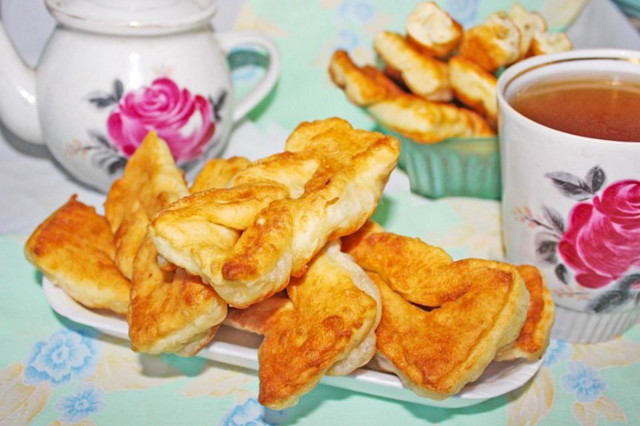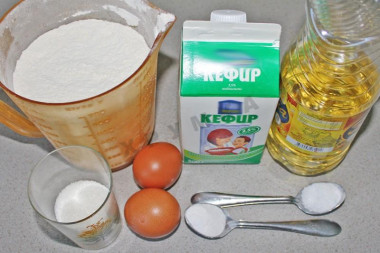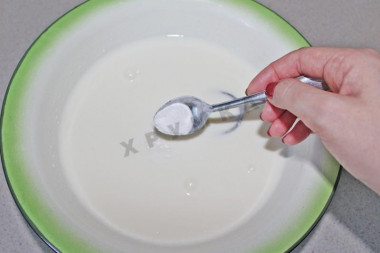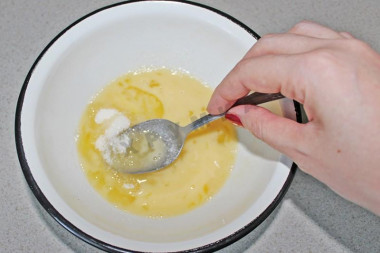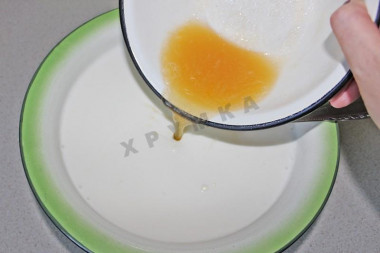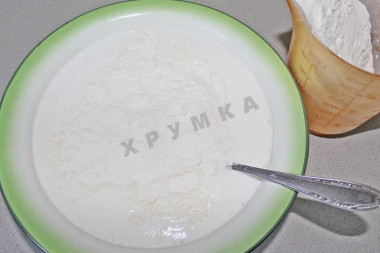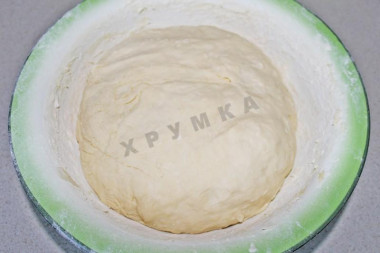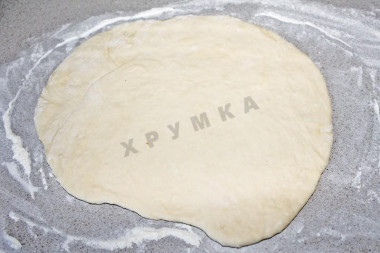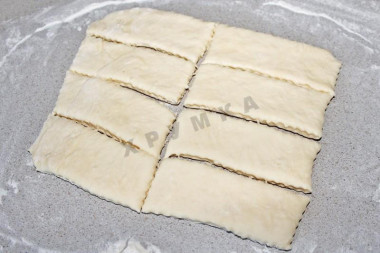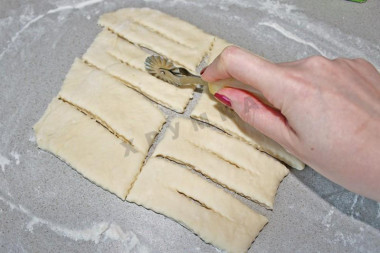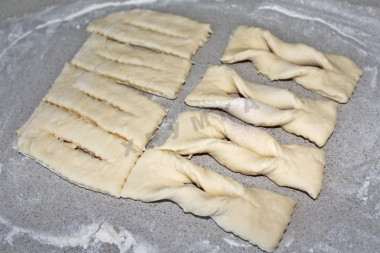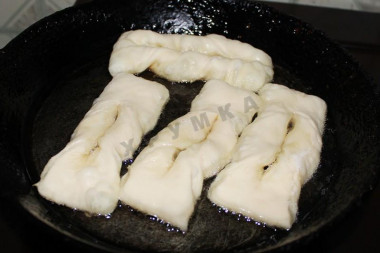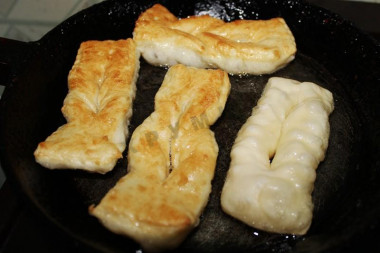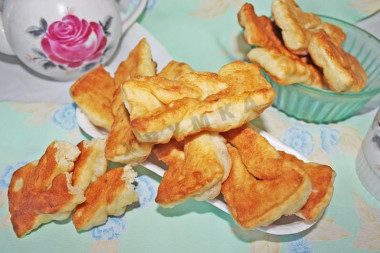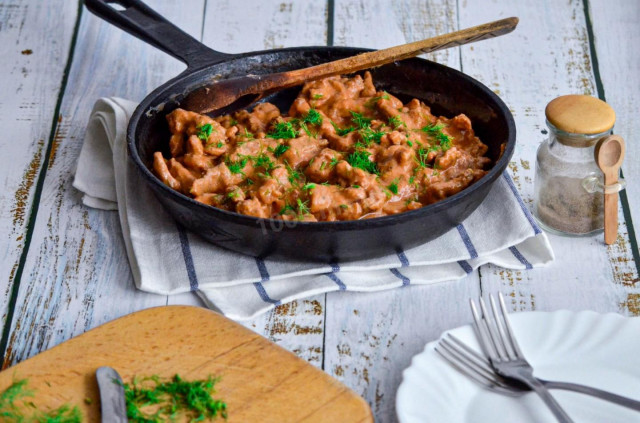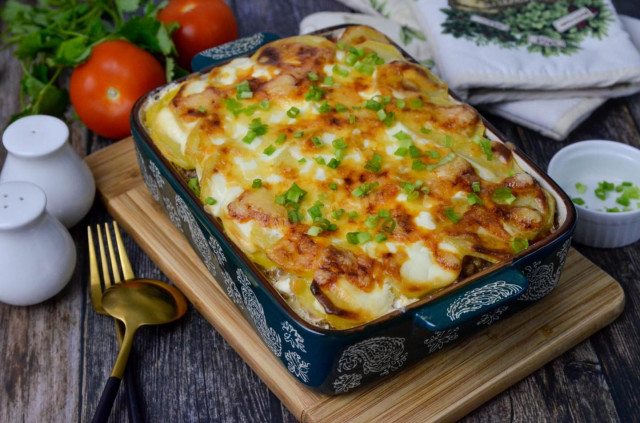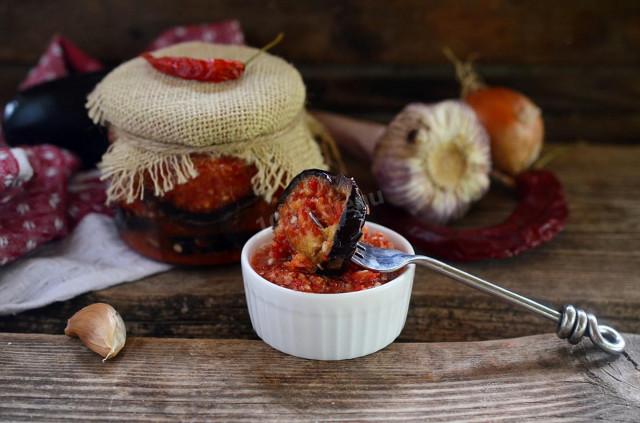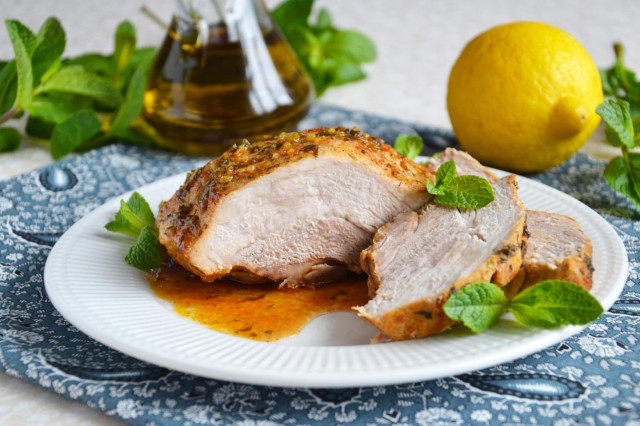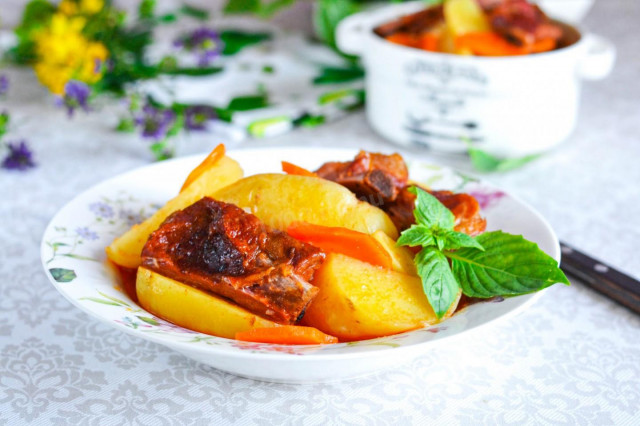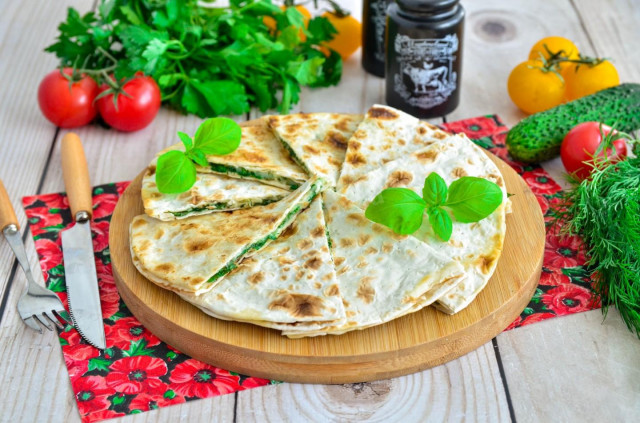Composition / ingredients
Step-by-step cooking
Step 1:
How to make krebli Krebel on kefir in German? Prepare the products. Kefir is suitable for any fat content, it can be mixed in half with sour cream or replaced with yogurt. Pre-sift the flour. This will not only remove possible debris, but also saturate it with oxygen, which will make the baking more airy and soft. Adjust the amount of sugar and salt depending on which krebli you want to bake — sweet or salty. I have a sweet option.
Step 2:
Heat the kefir over low heat so that it becomes warm. Add soda to it and leave for 5 minutes. During this time, a reaction will occur between the acid contained in kefir and the alkali, which is soda. As a result, a large amount of carbon dioxide will be released, which will make the dough very lush. In warm kefir, this will happen much faster, so we warmed it up. You will see that the mass will foam slightly and rise.
Step 3:
Wash well and then dry the eggs. Be sure to wash them before use, as even the seemingly clean shell may contain harmful bacteria. It is best to use food detergents and a brush. Break the eggs into a separate bowl. Beat the eggs with sugar, then add salt to them. You can use a regular fork, just mix the protein with the yolk.
Step 4:
Pour the egg mass into the kefir.
Step 5:
Gradually adding flour, knead the dough. Be prepared for the fact that flour may need more or less than indicated in the recipe. Focus not on the amount of flour, but on the desired consistency of the dough. It should become homogeneous, smooth and not sticky.
Step 6:
Cover the dough bowl with a towel and leave to rest for 1 hour. During this time, the flour will finally absorb all the liquid, and the dough will become even more elastic.
Step 7:
Sprinkle the table with flour and roll out the dough on it into a layer 5 mm thick.
Step 8:
Cut the dough into rectangles or lozenges. I used a shaped knife in the form of a wheel.
Step 9:
Make an incision in the middle, not reaching the edges.
Step 10:
Now take the blank by one edge and pull it inside through the incision, turning it out.
Step 11:
Heat the vegetable oil in a suitable frying pan — a cauldron or a frying pan with high sides. Make the fire medium and start frying the krebli, laying them out in portions of several pieces. They should float freely in the oil to fry evenly. Keep in mind that the krebli will increase in size.
Step 12:
Fry them until golden brown on both sides. In the process, turn the krebli over several times with two forks.
Step 13:
Take out the ready-made krebli with a slotted spoon on a dish with a paper towel, it will absorb excess fat. You can sprinkle them with powdered sugar or grease them with jam to taste.
Step 14:
Serve krebli in any form — they are delicious and warm and cooled. Bon appetit!
Read a lot of useful information about flour and its properties in this article!
Use oil with a high smoking temperature for frying! Any oils are useful only until a certain temperature is reached - the point of smoking, at which the oil begins to burn and toxic substances, including carcinogens, are formed in it.
Unrefined oils, with rare exceptions, have a low smoking point. There are a lot of unfiltered organic particles in them, which quickly begin to burn.
Refined oils are more resistant to heating, and their smoking point is higher. If you are going to cook food in the oven, on a frying pan or grill, make sure that you use oil with a high smoking point. The most common of the oils with a high smoking point: refined varieties of sunflower, olive and grape.
To check whether the oil has warmed up well enough in the pan, you can do it in a simple way. Lower a wooden spatula into it. If bubbles have gathered around it, then you can start the frying process.
Caloric content of the products possible in the composition of the dish
- Chicken egg - 157 kcal/100g
- Egg white - 45 kcal/100g
- Egg powder - 542 kcal/100g
- Egg yolk - 352 kcal/100g
- Ostrich egg - 118 kcal/100g
- Whole durum wheat flour fortified - 333 kcal/100g
- Whole durum wheat flour universal - 364 kcal/100g
- Flour krupchatka - 348 kcal/100g
- Flour - 325 kcal/100g
- Granulated sugar - 398 kcal/100g
- Sugar - 398 kcal/100g
- Kefir fat - 62 kcal/100g
- Kefir of 1% fat content - 38 kcal/100g
- Low-fat kefir - 30 kcal/100g
- Kefir "doctor beefy" 1,8% fat content - 45 kcal/100g
- Kefir 2.5% fat content - 53 kcal/100g
- Vegetable oil - 873 kcal/100g
- Salt - 0 kcal/100g
- Baking soda - 0 kcal/100g

